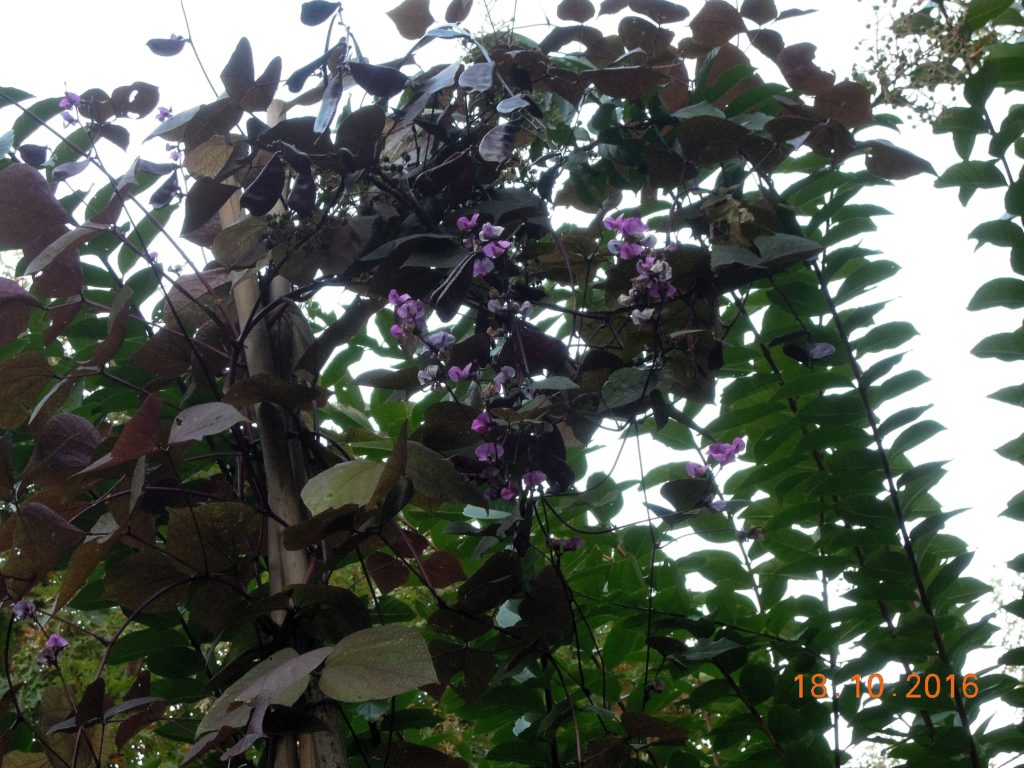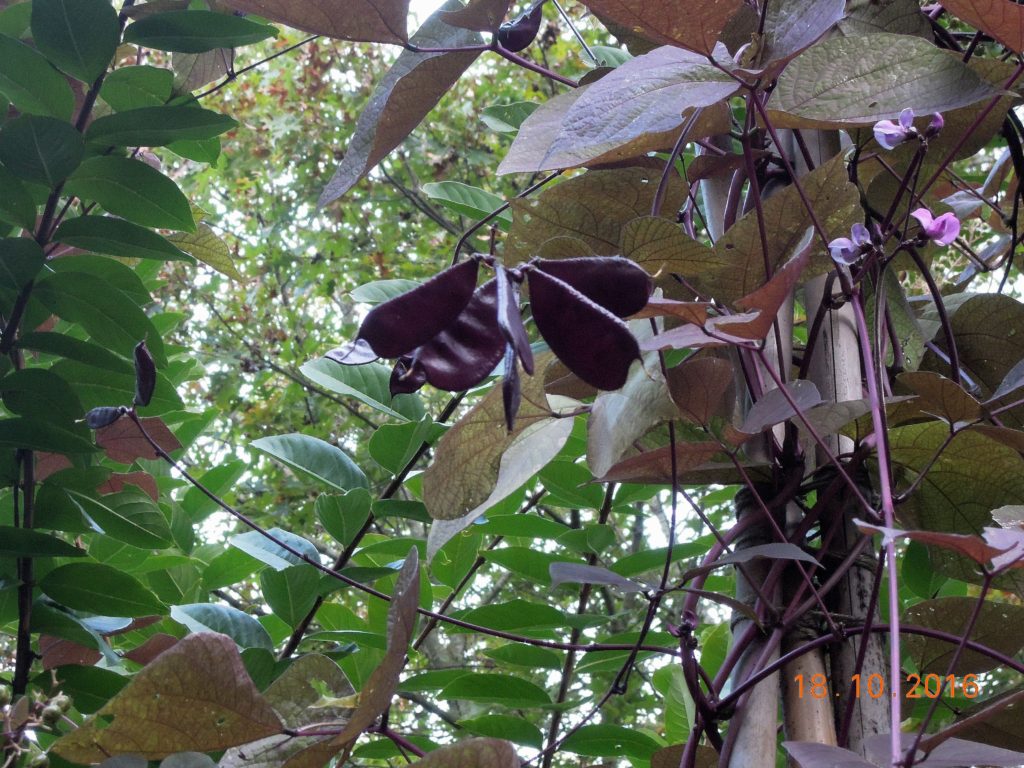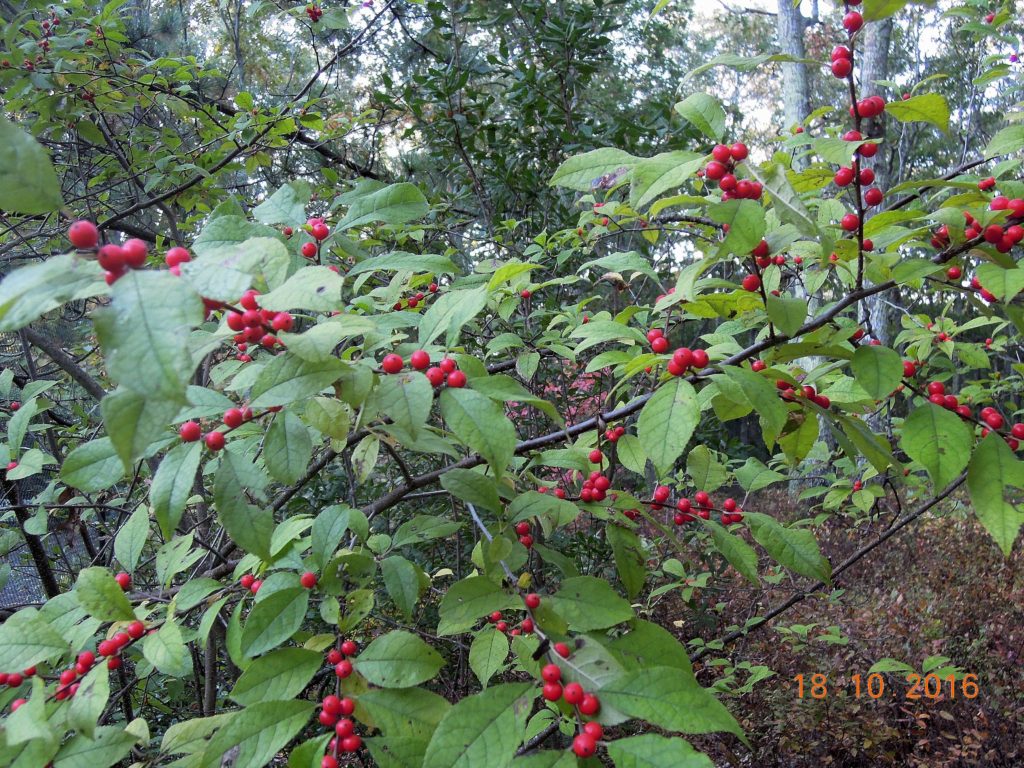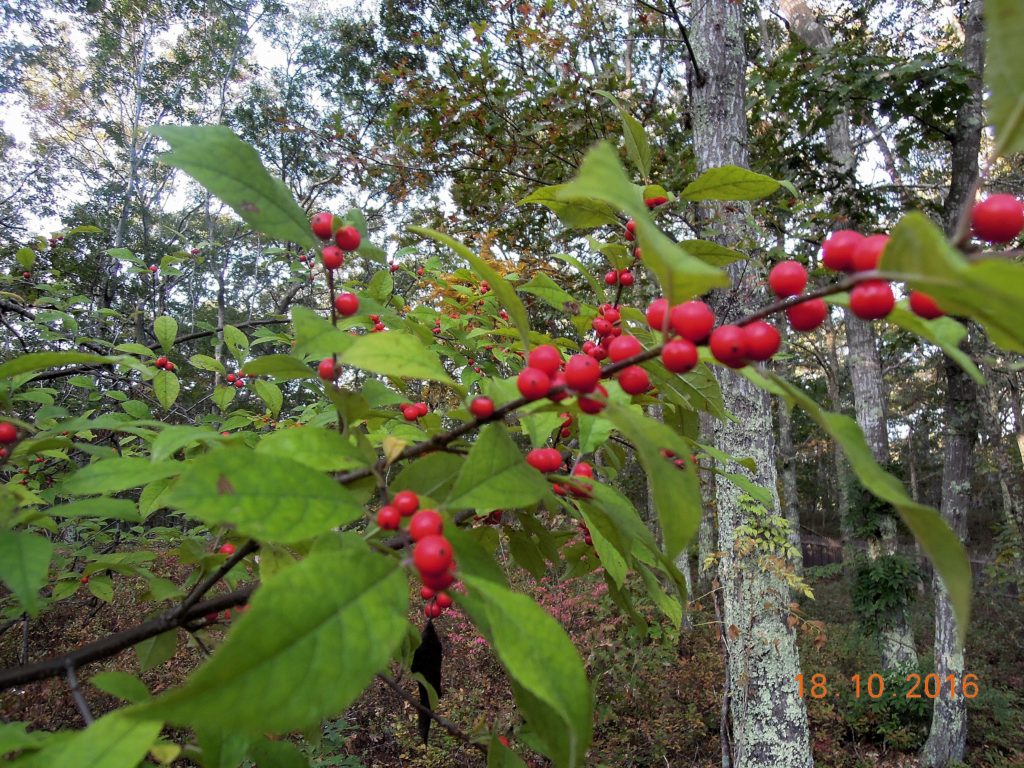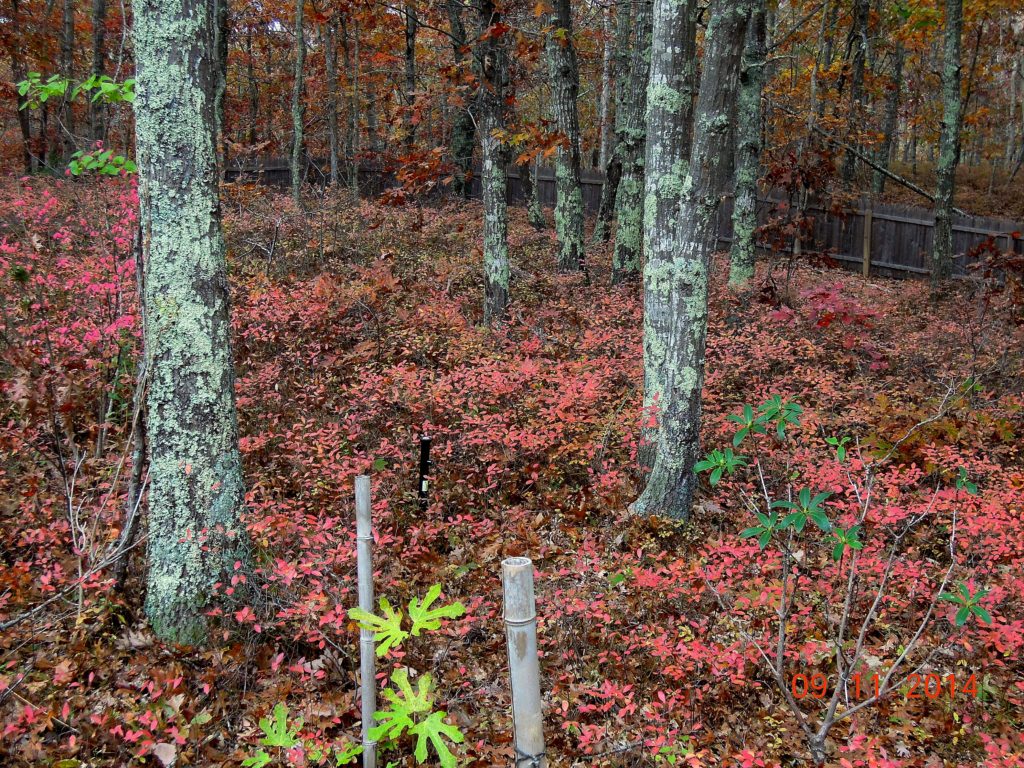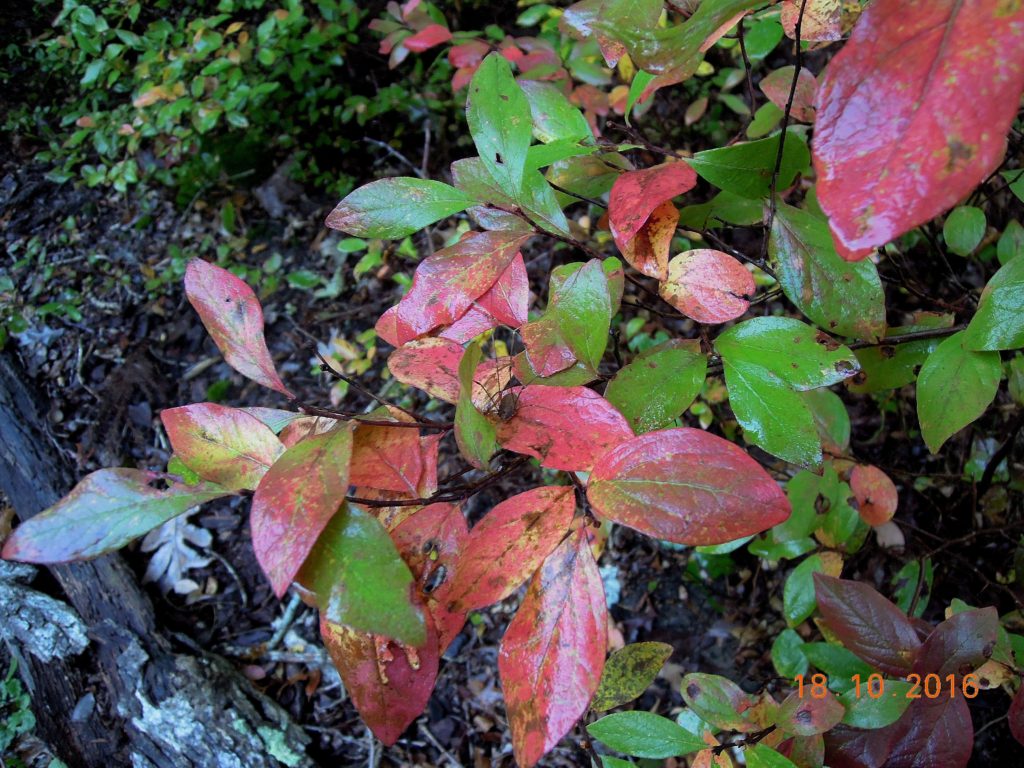This is an oak mast year like none other: Torrents of acorns have been raining down on our heads for months. We need to buy helmets. Mother Nature is fond of oak forests. Me, not so much.
We remove bucket upon bucket overflowing with acorns from our garden beds, decks and paths, yet an abundance of acorns remains. The woodland creatures don’t seem the least bit interested in eating acorns. Even the usual suspects, the squirrels, act as if acorns have nothing to do with them — they are always at the bird feeders, along with the chipmunks.
But I digress. I really want to talk about 2016 garden successes:
First and foremost is the vine Lablab purpureus (Hyacinth Bean), a fast growing, showy annual. Flaunting purple stems, purple flushed green foliage, and purple flowers, Lablab is a dazzler. And when the flowers fade, the vine produces amazing mahogany-red bean pods.
I last grew the vine in 2004, collected the mature black and white beans — when the pods turned brown and dry — and stored them in the refrigerator in a small glass jar. For years, every time I opened the fridge door they screamed, “Plant us, plant us already!”
So, this year, I did.
Scientists germinated a date-palm seed that was nearly 2,000 years old and my beans were only 12. A piece of cake. Yet to ensure success, I soaked the beans in hot water overnight, planted them in a large, tall container with a tripod to avoid voles and rabbits, and waited until late July’s hot weather — a condition precedent for germination. Within weeks, they were on their way up the tripod, and soon after, Lablab flowers and pods appeared. Photos below.
Berried plants are also good doers, especially the native Common Winterberry (Ilex verticillata). My Winterberry shrubs thrive in moist, acid soil in shade and have been winter-hardy and disease-free for over twenty years. While hybridizers have produced scores of named cultivars, I love the Common Winterberry form. There is nothing common about it. Just ask the birds. Every year they gorge themselves on the berries and every year we find — happily find — Winterberry volunteers in the garden. Photos of the berries below.
Lowbush Blueberry (Vaccinium angustifolium) is another outstanding native plant and my natural groundcover. All the woodland creatures love its berries — and so do I. (While we have close to four acres, I’m lucky if they leave me enough to bake a pie.) As a bonus, come Autumn, the blueberry foliage is aglow with color. Photos below.
Garden successes — and plants in general — do help to offset the angst of a sorry Presidential election. Have a joyous Thanksgiving!
